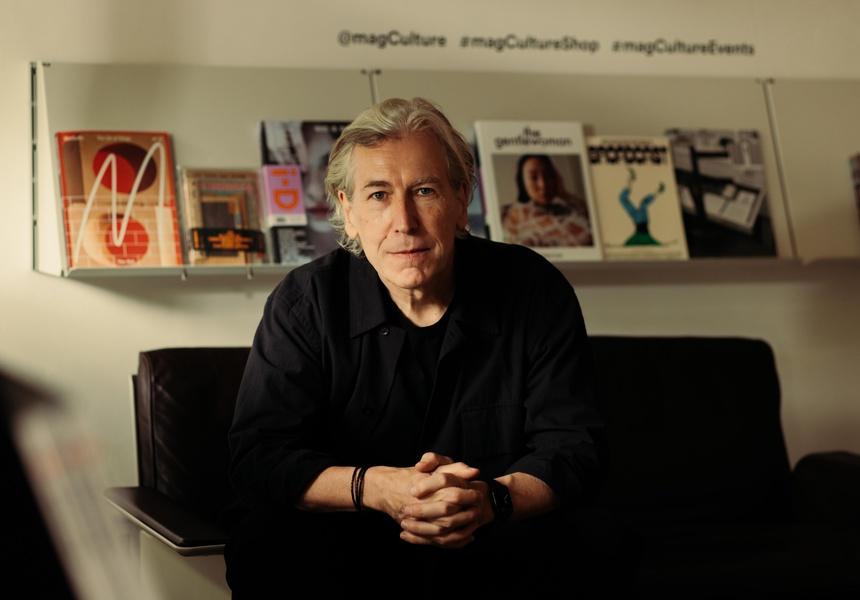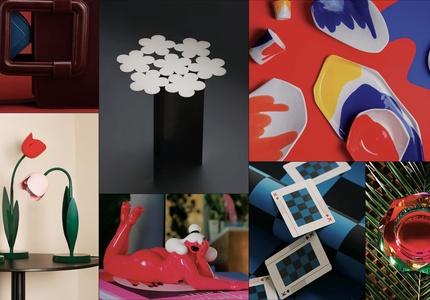On a cold November morning in 2015, Jeremy Leslie almost walked away. He’d found a space on St John Street in Clerkenwell for his new business, but as the moment to commit arrived, panic set in. “As I was picking up the keys I thought, ‘I know nothing about opening a shop, I can’t do this,’” he remembers. But when he arrived, the old newsagent’s refrigerator had been moved, revealing a hidden terrazzo floor, unexpectedly elegant beneath cheap blue plastic tiles. “At that moment I realised it was right – I had to do it.”
Ten years on, Magculture has grown into something of a London institution. The shop – part storefront, part meeting point, part archive – has evolved into a cult space for people who live and breathe magazines. The shelves are stacked with around 700 titles: the ones Leslie and his small team believe are worth your time. “The ultimate criticism is omission,” he says. “We sell a lot of magazines, but they are the best magazines.”
Walking in, you’re just as likely to see a design student leafing through Apartamento as you are a visiting editor from the New Yorker. Customers pull together unexpected stacks – the Fence alongside a football zine and a niche architecture title. Staff are often making their own publications on the side. Boxes arrive every day, and the team slices them open with the excitement of discovering something new. The shop is less about transactions than sustaining a community of obsessives.
Leslie himself has been one for decades. He came up as a designer, working as creative director at a big London publisher. Alongside that he wrote books on magazines, started the Magculture blog and became a commentator on what print could be in the 21st century. At a time when everyone seemed to be proclaiming “print is dead”, Leslie noticed something different. “Mainstream publishing was dying,” he says, “but brilliant independents were coming through – Fantastic Man, 032c, the Gentlewoman – and they were successful. That’s where the energy was.”
His own initiation into the medium was through NME. As a teenager, the weekly music paper wasn’t just functional – gig listings, record reviews – it created a complete world. If it sold out at the local newsagent, he’d be forced to grab Sounds instead. “It was the difference between a friend and an acquaintance,” he says. “You could put up with it, but you weren’t going to hang out too long with them.” Later, the Face arrived and changed everything again. Only afterwards did he learn that its founder, Nick Logan, was also behind Smash Hits and had once been editor of NME.
Talking about those years – often referred to as a “golden age” of magazines – Leslie is both nostalgic and pragmatic. Magazines, he says, were never just about information, they were about identity. “Magazines were our internet,” he says. “They guided you through teenagehood. They told you who your people were.”
To work for Vogue editor Anna Wintour in the 1990s, staff had to take a 178-question culture quiz – recently made public online – that shows just how seriously magazine culture was taken. If Leslie were to design his own version, it might sound something like this: Which magazine’s tagline was “The magazine of gourmet bathing”? (Wet.) Why are the cover stars of i-D always photographed winking? (The facial expression echoes the magazine’s emoticon logo.) What’s a MacGuffin? (A plot device, like Rosebud in Citizen Kane, that drives the action at first but proves to be a red herring.) Which periodical first described itself as a “magazine”? (The Gentleman’s Magazine, London, 1731.)
The shop is an extension of this kind of curiosity, but also of Leslie’s taste. “I encourage the idea that everyone has a magazine in them,” he says. “But that doesn’t mean I’ll stock just anything.” He draws a line between supermarket glossy magazines and the kind of independent titles Magculture champions. These are magazines that feel closer to limited-edition art objects: carefully designed, often priced more like books, and meant to be kept.
Magculture is rooted in London but international in scope, with titles from Seoul, Amsterdam, Mexico City, Los Angeles and beyond arriving every day. Visitors would recognise a similar spirit here to London stores like Idea Books and Shreeji News, and Casa Magazines and Iconic in New York.
Over time, the shop has quietly become part of the city’s fabric. Clerkenwell locals drift in on Saturday afternoons, sometimes just to browse and talk. Designers bring in visiting friends. The regulars treat it like a club, a place where they might bump into someone they’ll later collaborate with.
In a city where much of publishing has been absorbed by corporate offices in glass towers, MagCulture is an antidote: human-scale, idiosyncratic, unmistakably physical.
Magculture
270 St John Street, London EC1V 4PE





